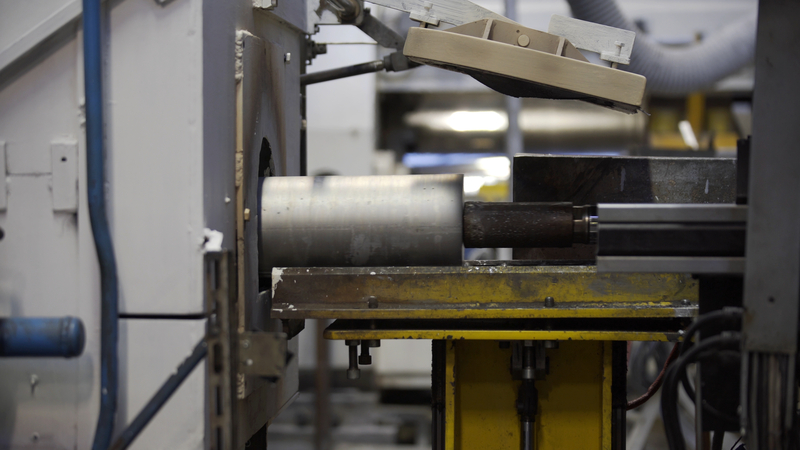
We all live with all types of buildings, appliances, and structures around us made out of aluminum, but how much time do we spend thinking about how everything’s made? The aluminum extrusion process is very similar to how we squeeze toothpaste from its tube - raw, heated aluminum is pushed through cross sectioned dies emerging in the desired profile.
While the process might appear straightforward, the various steps involved are pretty interesting and are worth understanding if you are looking for extrusions for your next project. Here's a closer look at what exactly is involved in the aluminum extrusion process.
Let’s dive right in.

The die in a press is a circular component that works something like the mouth on a tube of toothpaste - the paste will be squeezed through it and take its shape. It’s usually made of hardened H13 steel and is typically pre heated to approximately 450 to 500 degrees before it is placed in the extrusion press.
Billets are solid, cylindrical aluminum blocks that serve as the raw material for the extrusion process. Aluminum needs to be heated up to a certain temperature before it starts to weaken and lose strength. Because of this the first thing you will need to do is warm up the billet until it’s hot enough to be molded but not yet at melting point.
To protect human operators from the heat, mechanical arms will then be used to transfer the billets from the ovens into the press. Before it is placed in the press, however there will need to be an appropriate amount of releasing agent or grease available to counteract the friction involved in the process and prevent the possibility of having moving parts stuck together.
The container here is a specially designed receptacle that is capable of withstanding terrific levels of pressure without losing its structural integrity. Hydraulic rams are capable of producing up to 15,000 tons of pressure and these are used here to push the billets into the container.
Once the container is completely filled up, the billet will start squeezing through the die since it will have nowhere else to go. It will emerge as a fully formed extrusion.
Extrusions coming through the die will still be hot and pliable and will need the help of pulley systems to come through efficiently. After they are laid out along the runout table, overhead fans or water baths will then be used to bring their temperatures down.
Extrusions need to fit specific length requirements and so specialized saws will be used to cut them at the right point as they emerge from the press. This operation will be carried out by means of a hot saw. You will need a hot shearing saw to match the temperature of the aluminum which won’t have cooled down completely after passing through the quenching station.
After the extrusions have been cut according to specifications, they will be placed on cooling tables where they will gradually fall down to room temperature. After this they will be ready to move on to the stretching station.
As part of a normal extrusion run, many profiles end up being twisted and out of alignment. The most effective solution for this will be to hold onto both ends of the extrusion and stretch it until it comes back into proper alignment.
Once you have a perfectly straight and cooled down length of aluminum profile then the next step will be to place them on a saw table where they will be sawed down to the desired lengths. Optional post extrusion treatments such as heat treatment, fabrication and so on can then be put into consideration.
Whether you are a professional builder, manufacturer or a private enthusiast that enjoys working with aluminum you should always look for the best material possible.
JMA Aluminium has many decades of experience supplying aluminum extrusion products all over the world and is ready to help you achieve the vision you have for your next project. For all your aluminum extrusion needs make JMA Aluminum your first choice.
Shishan Production Base
Nonferrous Metal Industrial Park, Xiaotang, Shishan Town, Nanhai District, Foshan City, Guangdong Province
Gaobian production base
Gaobian Zhangbian Industrial Zone, Dali Guangyun Road, Nanhai District, Foshan City, Guangdong Province
Company summary: + 86-757-85558828
Fax: + 86-757-85550238